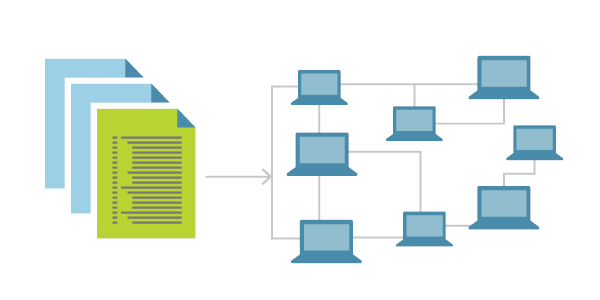Category: Tutorials
The Liquid Web knowledgebase provides information on thousands of topics surrounding every aspect of hosting, Linux, Windows, and countless other article types that help boost your Liquid Web experience!
How To Set Up and Use The Liquid Web CLI Interface
What Is the Liquid Web CLI Interface?
This is the official command-line interface for the Liquid Web API. CLI stands for the “command-line interface” which is used for interacting with multiple Liquid Web services via the Liquid Web’s Public API.
What is Infrastructure as Code? (IaC)
Introduction: What is IaC?

Today we will become acquainted with a concept known as Infrastructure as Code. The idea of Infrastructure as Code is becoming more and more popular today. IaC is a method used to manage and provision a data center via defined machine-readable files instead of physical hardware configuration or other interactive configuration tools. This article will share what it is used for, why it is important, and why businesses strive to utilize this platform to achieve a desired set of results. It is essential to understand that we will consider both the theoretical and practical parts of IaC.
How to Install MongoDB on CentOS 8
What is MongoDB?

MongoDB is a documented database management system that does not require the description of a table scheme. It is representative of a NoSQL based system (NoSQL is an approach to implement a scalable database storage system within a flexible data model), which uses JSON like documents and database schemas often used in web development. It is written in C, C++, JavaScript, and since it is cross-platform, it allows one to deploy it on any platform.
How Can Our New Managed Cloud Platform Benefit You?
Liquid Web’s new Cloud Platform is an environment designed with website uptime, ease of use, and scalability in mind. It combines the easy-to-use cPanel-based environment with a Load Balancing solution. This platform is also included in our Fully Managed Support.
What is MongoDB?

MongoDB is a documented database management system that does not require the description of the table scheme. It is an example of NoSQL systems (NoSQL - this is an approach to implement scalable db storage with a flexible data model), MongoDB uses JSON like documents and a database scheme. It is often used in web-development along with Big data. MongoDB is written in C++, C, and JavaScript. It is also cross-platform, which lets us deploy it on multiple platforms.
How to Implement Zero Trust Security in 5 Steps
What is Zero Trust Security?
Zero Trust security is the concept, methodology, and threat model that assumes no user, system, or service operating within a secured internal environment should be automatically trusted. It put forward that every interaction must be verified when trying to connect to a system before being granted access. This concept uses micro-segmentation, and granular edge controls based on user rights, application access levels, service usage, and relation to the location to determine whether to trust a user, machine, or application seeking to access a specific part of an organization.
What is lsyncd?
lsyncd is a rsync-based tool that monitors specified directories (including subdirectories) for updates and modifications, and then syncs those changes to a specified destination. It is a lightweight command application that is easy to install and configure using the popular Lua language.
How to Install and Update Python to 3.9 in Ubuntu
In this article, we will explore the newest methods to install or update to the latest version of Python on our Ubuntu system.
How to Repair the DNS DCV Error in cPanel
How Using Cloudflare Affects AutoSSL in cPanel
We have provided information about Cloudflare, AutoSSL, and the advantages of utilizing those services in previous articles. In this article, we will focus on solving one of the specific issues seen when using Cloudflare and AutoSSL together on a cPanel/WHM server. These services function admirably in almost every setting and can be relied upon to deliver the service they advertise. However, in certain situations, services can clash through no fault of their own.
What are Inodes in Linux?
As you are probably already aware, everything is considered to be a file in Linux. That includes hardware devices, processes, directories, regular files, sockets, links, and so on. Generally, the file system is divided into data blocks and inodes. With that being said, you can think about inodes as a basis of the Linux file system. To explain it more clearly, an Inode is a data structure that stores metadata about every single file on your computer system.
Our Sales and Support teams are available 24 hours by phone or e-mail to assist.

